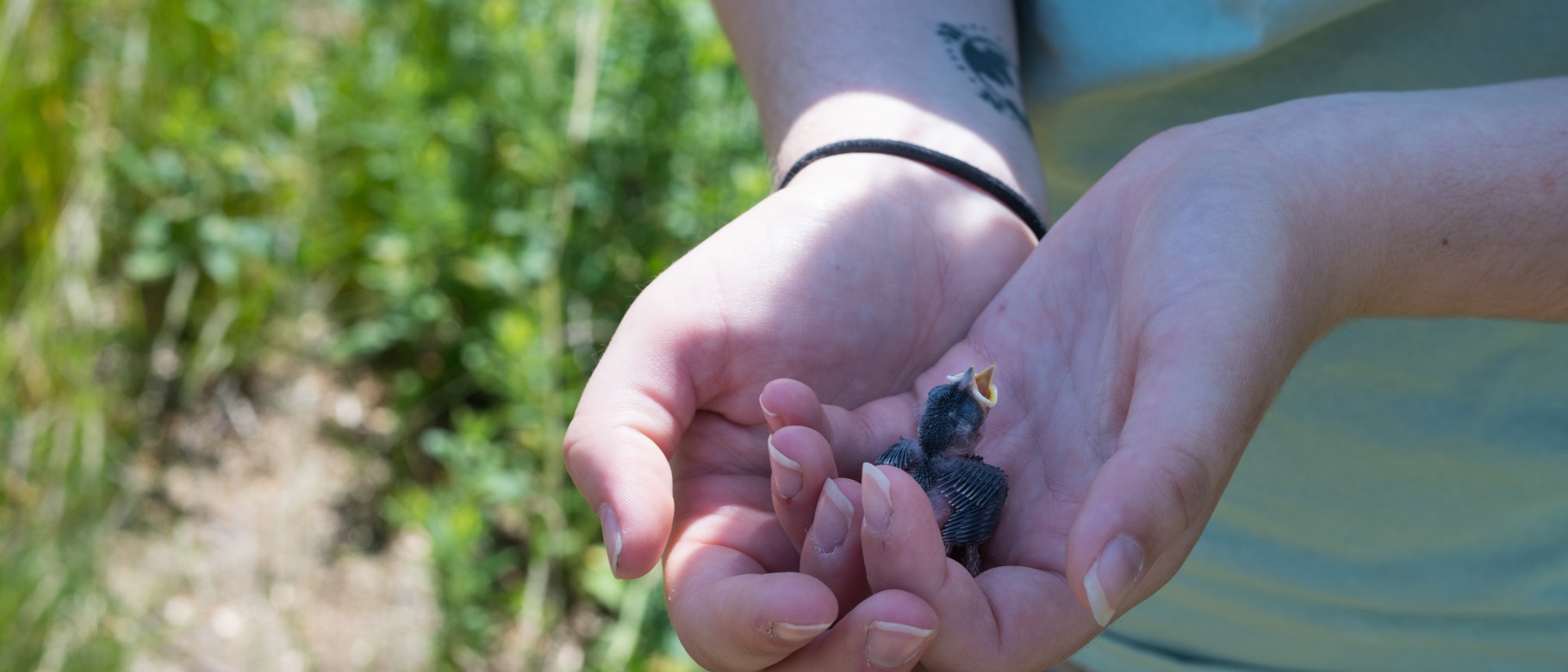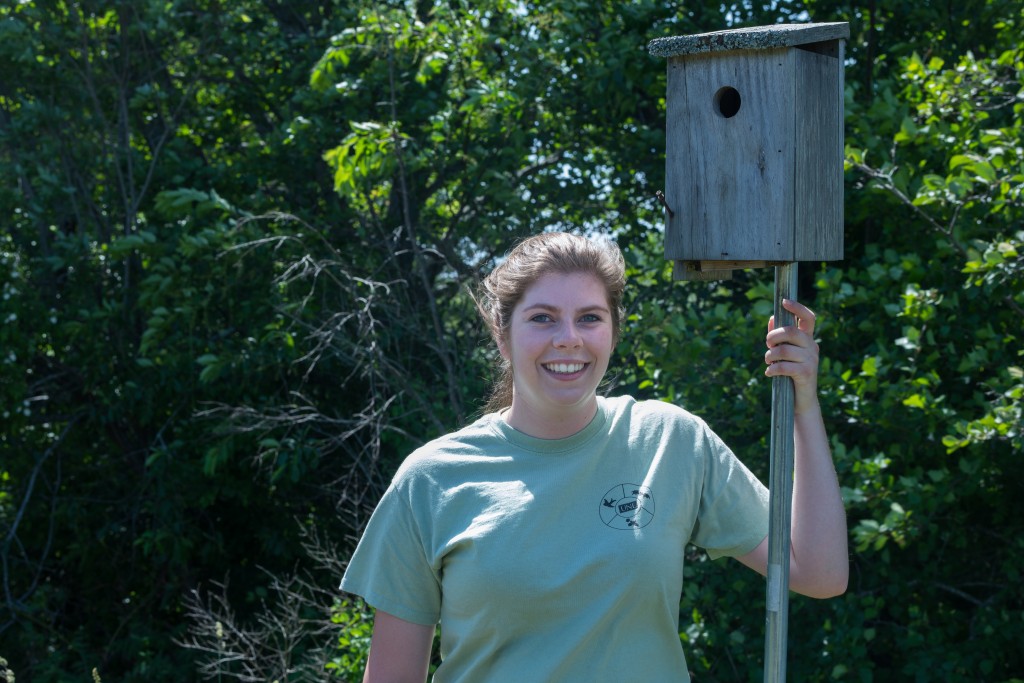Sustainability Office summer intern Hope Dubois says mosquitoes are for the birds!

An irate mother bird squawks angrily at Hope Dubois ’21 as she gingerly scoops a newborn chick from its nest into her cupped hand. It is difficult to precisely locate the adult bird, perched somewhere among the trees bordering UNE’s soccer field, but the volume of her protests indicates that she is very nearby and that her watchful eyes have spotted the intruder at her homestead.
What mama bird does not know, however, is that Dubois means no harm. In fact, she is very much invested in the wellbeing of the chick. An Environmental Studies and Global Studies double major, Dubois, a native of Minot, Maine, is working through the College of Arts and Sciences Internship Office as a summer intern with the UNE Mosquito Control Project, which originated in 2012 from a collaborative effort between Associate Professor Noah Perlut, Ph.D., (Environmental Studies) and the University’s Environmental Health and Safety Department.
Part of UNE’s overall Integrated Pest Management Program, the Mosquito Control Project seeks to reduce mosquito populations on the Biddeford Campus in two ways: by growing mosquito-repellent plants and by encouraging the habitation of native mosquito-eating birds and bats. While the bat population remains low at UNE, reflecting a continental trend resulting from the proliferation of the deadly white nose syndrome, the project has had far greater success with birds. About 20 nesting stations have been placed at key Biddeford Campus locations (such as in areas near water and on open plains) that are particularly favored by two native species who love to dine on mosquitoes: tree swallows and Eastern bluebirds. Other native species who build nests in the boxes are welcome to stay as well.
Having that hands-on experience of catching the birds, banding and weighing them, and collecting data and samples is simply priceless. A textbook may be able to tell you the process of how to conduct research similar to this, but actually being able to do it myself gave me the confidence I had lacked with animals and the outdoors."
Dubois believes passionately that alternative methods of pest management should be used whenever possible, rather than relying exclusively on traditional, chemical insecticides. “What some people don’t realize is that the pesticides don’t only target one type of bug; they can kill all soft-shelled and some hard-shelled insects in addition to mosquitoes,” she explains. “This drastically harms our ecosystems and natural world. Not only are we reducing or eliminating a food source for many species, the chemicals, themselves, can directly harm the animals through water runoff, secondary poisoning and other methods. If we are able to find an alternative way to help control the population of mosquitoes that does not harm the environment, why not use it?”
While Perlut, Dubois’ advisor, is off-campus for the summer, conducting research in Vermont, Alethea Cariddi, M.S. Ed., UNE’s sustainability coordinator, oversees the continuation of the work performed by Dubois in her internship. Such work calls for the rising sophomore to collect data on the birds that have made the nesting stations their homes. Through a door on the side of the nesting station, she can monitor activity in the nests and take out birds—both chicks and adults—for banding and data collection. She records the species of the inhabitants, how many eggs are laid in each nest and how many eggs hatch. She also collects fecal samples from the birds to send to a lab that analyzes the birds’ diets. “It helps us to see just how many mosquitoes and what types of mosquitoes the birds are eating,” she notes.
The internship has been unlike any other academic experience in Dubois’ life. “From working with several different species of birds and bats, I have gained so much knowledge and insight that I feel can only be learned out in the field,” she shares.
And that confidence in handling the birds comes with a newfound respect for her feathered friends. She says that while birds are usually such a normal part of everyday life that they often go unnoticed, her daily observations of and interactions with the birds on campus during her internship have given her a new appreciation for the animals – even if mama bird doesn’t quite find the feeling mutual.
